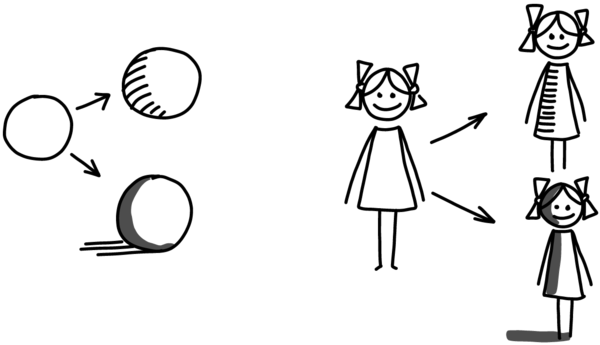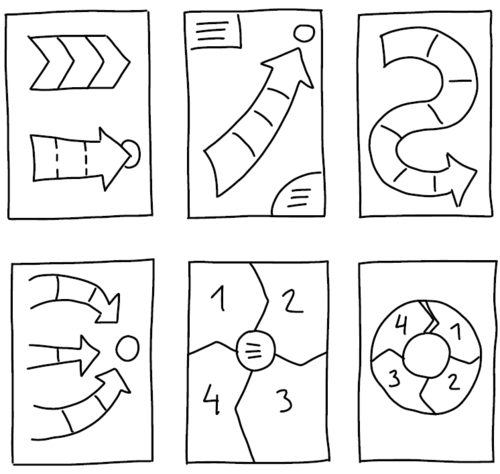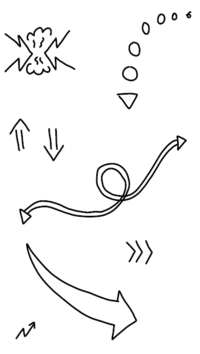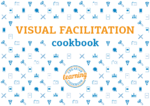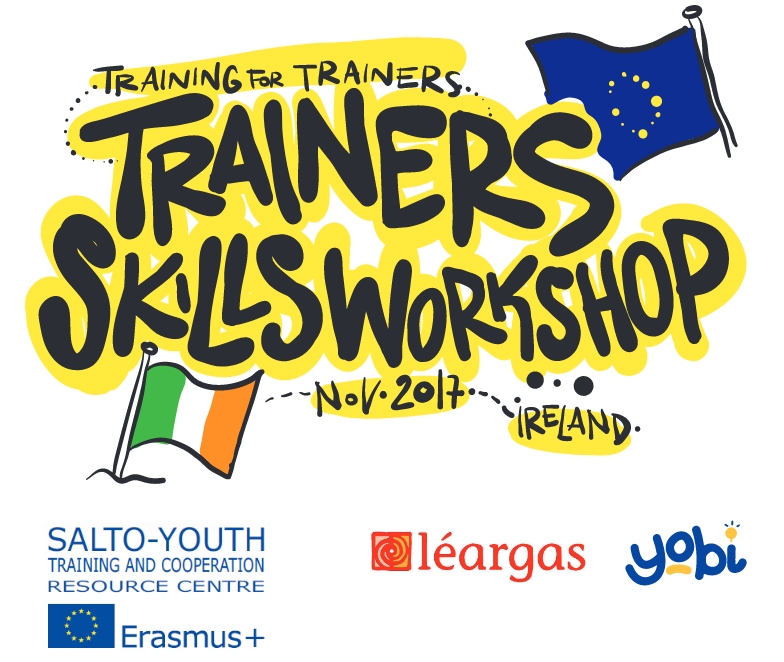Visual Facilitation is the intentional integration and application of visual elements and exercises into our educational activities for:
- Presenting content and information.
- Supporting (in the sense of actively guiding) an individual and/or group process.
- Documenting outcomes.
Especially when it comes to situations where the density of information, or the level of complexity, is rather high, the use of visual elements is of a great value for perception and overall understanding. Therefore, we also see Visual Facilitation as a more holistic and dynamic approach in education, that can be used to deal with the challenges of “information overflow” and the complexity of a globalised and rapidly changing world.
Visualisations can grab attention and increase a learner’s level of motivation and engagement. Combining spoken and/or written words with visual elements and thus addressing different senses, has an impact on how people perceive information and retain facts in their memories.
In fact, almost every communication – especially in the field of education – consists of the intention of a communicator to “draw” or to develop a clear and detailed picture in the mind’s eye of the audience. The common phrase “I see what you mean!” makes that aspect literally quite clear. So, the challenge for a visual facilitator is to stimulate and to evoke these inner pictures in their audience by applying “visual language” onto educational activities. Two main approaches can be summarized under the topic visual facilitation
Graphic or Visual Facilitation
Leading and guiding an individual or group process, dialogue or working session by using a variety of visual tools, such as process illustrations, templates, drawings or even drawing exercises, etc.
Graphic or Visual Recording
Documentation and summarizing of a workshop, conference, lecture usually on large scale paper formats. A graphic recorder has a more passive role and does not normally interfere directly in the group process. Sometimes also called Scribing.
Example: Supporting complex explanation with visual support
Why Visual Facilitation?
Some people like to say that Visual Facilitation works because there are different types of learners (audial—prefer to listen, visual—prefer to see, verbal—prefer to speak and kinaesthetic— prefer to move or do some physical activity), so some of us are just visual learners. In reality, none of us is just a onetype learner, we use more or less all four types, depending on the situation. In this sense, visual facilitation completes the repertoire of facilitators for adequatly approaching different learner types.
Furthermore, most of the information we receive comes through our eyes, not just the texts and images we aim to read or watch, but also the colour of furniture, lighting, organisation of our spaces, which we know by heart and once learned visually, notice without even focusing. We can’t touch colours, smell textures or hear the size of an object, therefore our eyes are important to us. Visuals deliver information faster and this information is easier processed.
And in generaL we read images through our eyes, but they are processed through our brain which, according to collected information, recognises objects and gives signals to other parts of the body. Therefore visual facilitation stimulates and supports learning through and with the whole body, which is a crucial thing for holistic, experiential learning.
Most importantly, images bring inclusion of people who speak different languages, which is crucial in international or intercultural groups or situations when someone can be excluded from the process because of the level of their spoken language, even in their mother tongue.
Aspects
The vocabulary of visual facilitation includes all what is in general included in other visual arts. Especially:
- Making use of basic shapes
- Boxes, containers
- Character, people
- Symbols and icons
- Organizing information in diagrams, logical structure
- Letters and typography
- Composition
Visual Facilitation Cookbook
The content of this page was published under a CC-BY-NC-SA open license in: Torben Grocholl, Deniss Jershov and Kati Orav: Visual Facilitation cookbook; Publishers: Estonian UNESCO Youth Association, Piepildīto Sapņu Istaba, Cooperativa Braccianti.
Graphic Harvesting
A sketched practice tool published by léargas and SALTO Training and Cooperation.
Download




